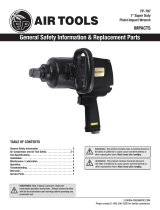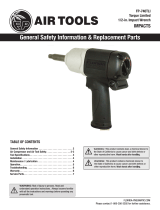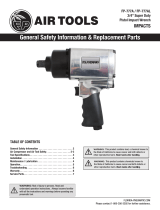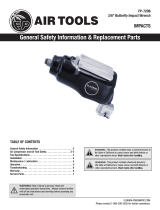Metabo DSSW Series impact wrenches are powerful tools designed for professional applications. They excel at inserting and extracting screws with ease, making them ideal for various tasks in construction, automotive, and industrial settings. These wrenches boast impressive torque capabilities, enabling efficient handling of demanding fastening jobs. Additionally, their compact and ergonomic design ensures comfortable operation, reducing fatigue during extended use.
Metabo DSSW Series impact wrenches are powerful tools designed for professional applications. They excel at inserting and extracting screws with ease, making them ideal for various tasks in construction, automotive, and industrial settings. These wrenches boast impressive torque capabilities, enabling efficient handling of demanding fastening jobs. Additionally, their compact and ergonomic design ensures comfortable operation, reducing fatigue during extended use.








-
 1
1
-
 2
2
-
 3
3
-
 4
4
-
 5
5
-
 6
6
-
 7
7
-
 8
8
Metabo DSSW Series impact wrenches are powerful tools designed for professional applications. They excel at inserting and extracting screws with ease, making them ideal for various tasks in construction, automotive, and industrial settings. These wrenches boast impressive torque capabilities, enabling efficient handling of demanding fastening jobs. Additionally, their compact and ergonomic design ensures comfortable operation, reducing fatigue during extended use.
Ask a question and I''ll find the answer in the document
Finding information in a document is now easier with AI
Related papers
-
Metabo DSX 150 Operating instructions
-
Metabo DSSW 930-1/2" Operating instructions
-
Metabo DSSW 2440-1" Operating instructions
-
Metabo DSSW 360 Set 1/2" Operating instructions
-
Metabo DRS SERIES User manual
-
Metabo DRS 68 Set User manual
-
Metabo DW 10-125 User manual
-
Metabo DS 14 User manual
-
Metabo DBF 457 User manual
-
Metabo DMH 290 Set User manual
Other documents
-
Chicago Pneumatic CP 40 High Power Operating instructions
-
Ryobi RA-NF90-K User manual
-
Powerplus POWAIR0805 Owner's manual
-
GYS Drill Owner's manual
-
GYS MINI GRINDER TOOL KIT - 75 mm Owner's manual
-
 Florida Pneumatic FP-797 User guide
Florida Pneumatic FP-797 User guide
-
 Florida Pneumatic FP-740TLI User manual
Florida Pneumatic FP-740TLI User manual
-
 Florida Pneumatic FP-777A User guide
Florida Pneumatic FP-777A User guide
-
Parkside PDUW 280 A1 Operating And Safety Instructions Manual
-
 Florida Pneumatic FP-720B User guide
Florida Pneumatic FP-720B User guide











